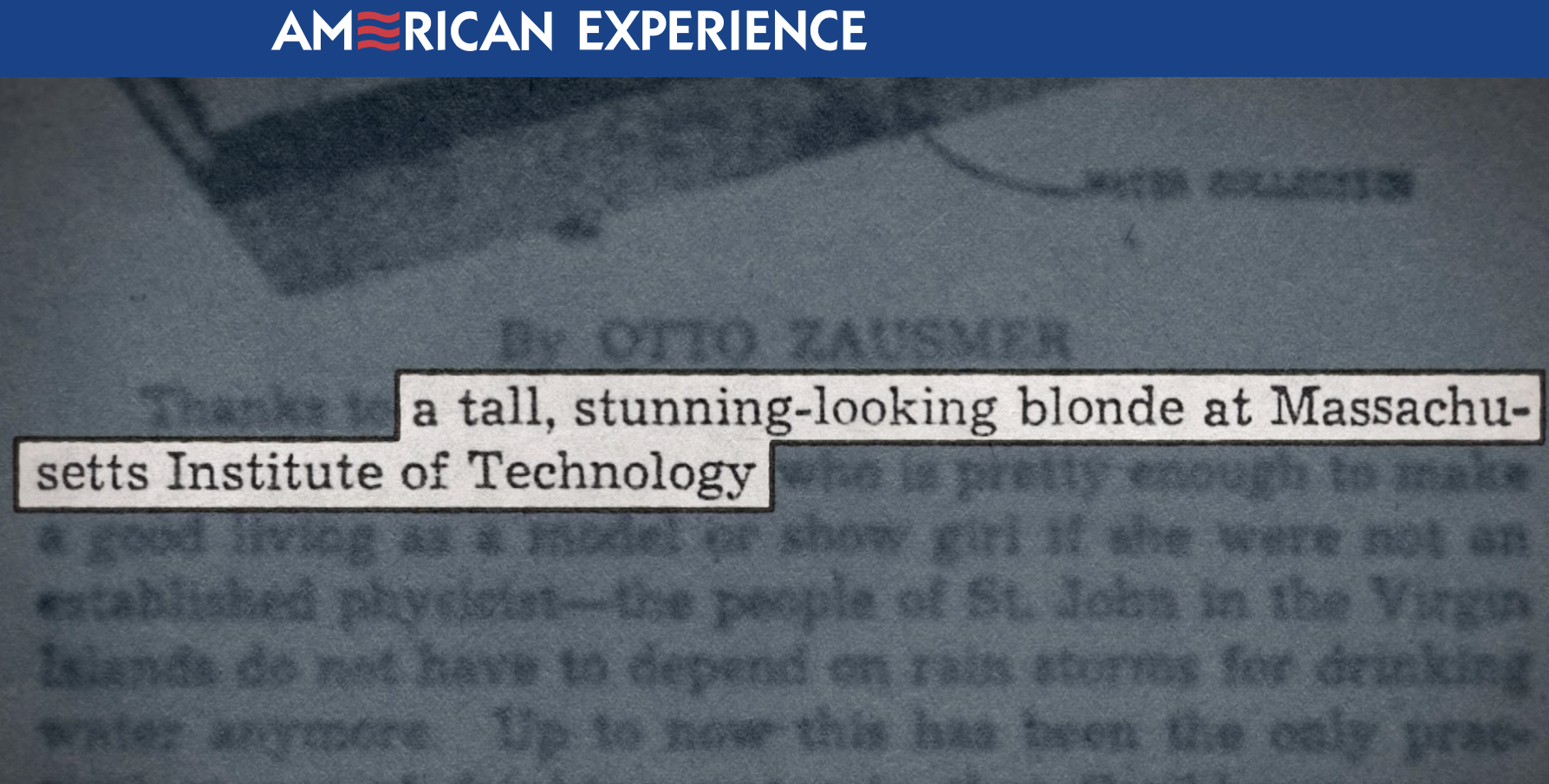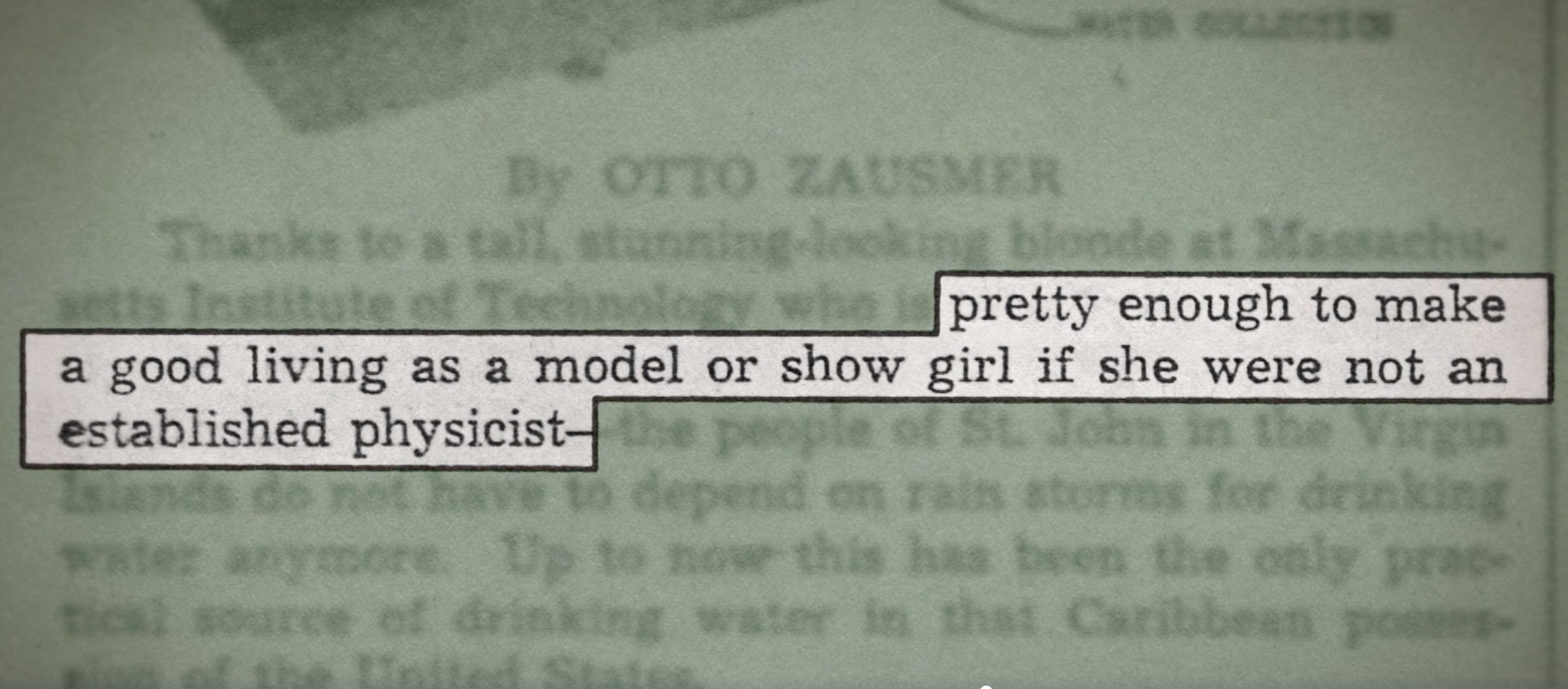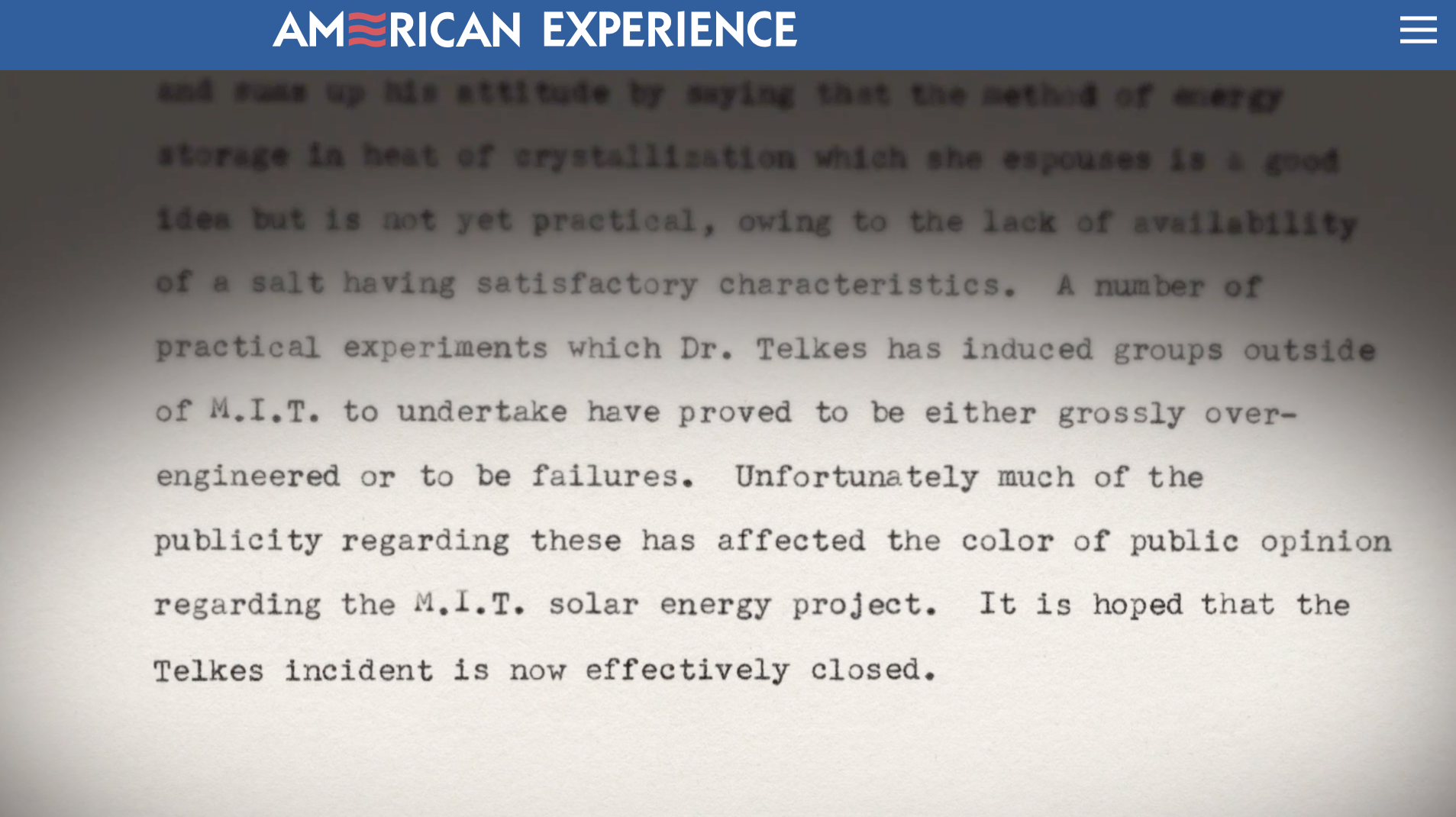Gender Equality and Climate Health
Dr. Maria Telkes. Credit: PBS American Experience.
The Sun Queen
I was watching a PBS American Experience episode called The Sun Queen, about a pioneer of solar energy who never gave up despite being discriminated against by her male colleagues and the press. Her name was Dr. Maria Telkes. Watching this film about her making the first solar heated residence, I felt taken aback that I had never heard of her and immediately began taking notes.
You may be wondering, since my website is about sex education, why am I starting off this article by writing about about solar energy? Well, besides having a growing concern over the effects of climate change, learning about Dr. Telkes and climate health brought me to question if topics related to sex education can be a part of treating climate change. (It’s also amusing that she and I happen to share a birthday).
Dr. Maria Telkes was born in Hungary on December 12th, 1900 and obtained her doctorate degree in physical chemistry from the University of Budapest in 1924. The book, “Energy Sources of the Future”, by Palmer Putnam, included experiments being done on solar energy in the United States of America, and influenced her to learn more. In 1932, Dr. Telkes moved to the United States, where she worked as a biophysicist at the Cleveland Clinic and Westinghouse Electric before she was hired at MIT in 1939 to manage their Solar Energy Conversion Project. The work culture in this male-dominated field was met with skepticism against Dr. Telkes’ assertiveness and passion for solar energy.
Due to World War II, the Solar project was postponed and Dr. Telkes was reassigned. She invented a solar still to take the salt out of sea water, making it drinkable for soldiers. The United States government ordered the production of her invention, but her coworker from MIT, Hoyt Hottle, kept delaying this process and this life saving invention was not delivered to soldiers in good time.



In 1948, independent from MIT, Dr. Telkes began working on her own goal to develop a house that would be heated solely by the energy of the Sun (Dr. Telkes was eventually fired by MIT in 1953). There had already been a couple of solar houses built by others, but none of them were able to hold on to heat overnight. She combined efforts by working with Amelia Peabody, a sculptor and philanthropist who sponsored the new project and owned land in Dover, Massachusetts, and Eleanor Raymond, a Boston architect. Link: The Sun Queen and the Skeptic
In Dover on Christmas Eve of 1948, The Dover House Project - aka The Sun House - commenced. A family of three moved into the two story, two-bedroom house with 18 large windows that were built to absorb UV rays. The windows generated heat, which liquified Glauber’s salt. This salt turns from a solid into a liquid once it reaches 90 degrees, and then cools down, freeing up the stored heat to be used as energy. The marketing Dr. Telkes did for The Sun House was very successful as it became popular with photographers, journalists, and visitors. Thousands of people came every week for tours, and the house was featured in LIFE Magazine and Popular Science. Link: Capturing the Sun
After six years, The Sun House project ended in 1954. Within a few years of its launch, things weren’t working as well and it was too cold to live in anymore. The Glauber’s salt began to leak as it became corrosive, and parts needed to be replaced. Dr. Telkes did not see this as a failure however, and she recognized that experimentation leads to stepping stones that are needed for change. “It is the things supposed to be impossible that interest me,” she once said. “I like to do things they say cannot be done.”
In a 1951 paper, Dr. Telkes wrote, “Sunlight will be used as a source of energy sooner or later anyway. Why Wait?”
Dr. Telkes in front of the Sun House. Credit: PBS American Experience.
Why wait? I keep wondering. After 73 years of her posing that question, it still feels like we’re waiting. Solar energy in the U.S.A is not fully embraced by many people who impact our lives, like politicians or large corporations.
It’s interesting to note that The White House - a significant building filled with highly influential people - actually had solar energy once. On June 20th, 1979, the Carter administration installed 32 solar panels on the roof and used them to heat water. A quote from President Jimmy Carter on that day:
"In the year 2000 this solar water heater behind me, which is being dedicated today, will still be here supplying cheap, efficient energy. A generation from now, this solar heater can either be a curiosity, a museum piece, an example of a road not taken, or it can be just a small part of one of the greatest and most exciting adventures ever undertaken by the American people".
The Carter administration set a goal of gaining 20 percent of U.S.A energy needs from renewable sources by the turn of the century, but by 1986 with Reagan as the next President, the White House solar panels were removed, and his administration stopped the budget for renewable energy research and development, as well as eliminated tax breaks related to wind turbines and solar technologies. Link: Where Did the Carter White House’s Solar Panels Go?
Learning about Dr. Telkes, I think of how there must have been many inventive women silenced on some level in the past century. Women whose ideas would have made our current lives healthier and better if only others saw them as equals.
You can watch the full documentary, The Sun Queen, here: pbs.org/wgbh/americanexperience/films/sun-queen/
More on Dr. Telkes’ many inventions: Marvelously Inventive Life of Maria Telkes
If you enjoyed this article and would like to show your support, my PayPal button is below. Thank you!

